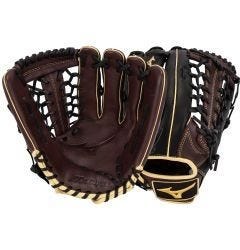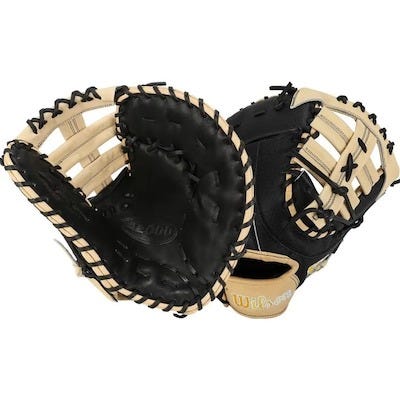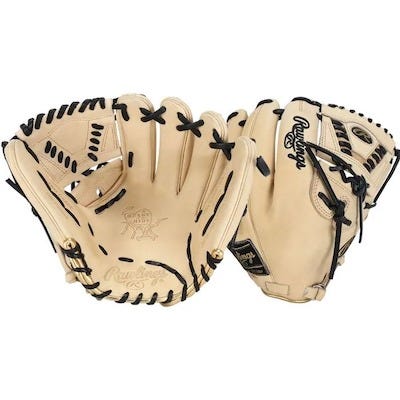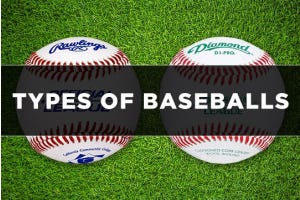A Complete Guide to the Different Types of Baseball Gloves
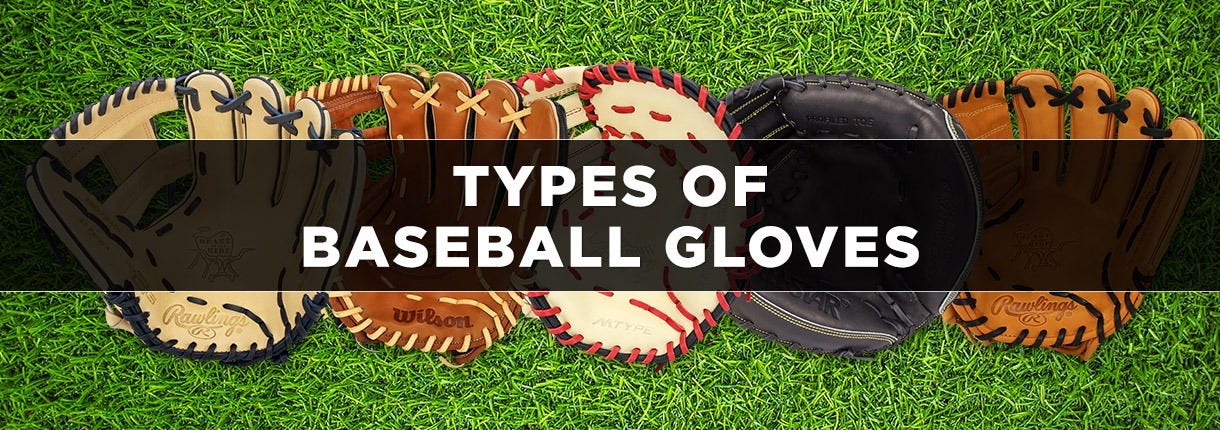
With 9 different positions on a baseball field, there will be different glove types that are dependent on a player’s position. Each type of baseball glove features different specifications, sizes, padding, etc. to allow a player at their respective position to perform their best. This article will walk you through each glove type, their features, and how these aspects aid in a player’s performance.
With 9 different positions on a baseball field, there will be different glove types that are dependent on a player’s position. Each type of baseball glove features different specifications, sizes, padding, etc. to allow a player at their respective position to perform their best. This article will walk you through each glove type, their features, and how these aspects aid in a player’s performance.
In this article, we’ll cover:
Infielder’s gloves are designed for second basemen, third basemen, and shortstops as they are smaller in size and feature a shallower pocket than that of pitcher’s gloves and outfielder’s gloves. A smaller glove and shallower pocket allow the infielder to field the ball and quickly transfer it to their throwing hand in order to make a strong throw and record an out.
Key Features:
- Youth Size Range: 9” - 11.5”
- Adult Size Range: 11.25” - 11.75”
- Pocket/Web Style: I-Web, Single-Post, H-Web, 1-Piece Solid Web
- Key Advantage: A quicker transfer from glove to throwing hand provides an infielder with more time to make an accurate and strong throw
An outfielder’s glove is designed for left fielders, center fielders, and right fielders. The outfielder’s gloves are bigger than the infielder’s gloves and provide the player with a deeper pocket. An outfielder’s main concern is securing the ball, thus outfielders focus less on a quick transfer by providing a bigger glove and deeper pocket to ensure the ball stays secure on the run, diving, or just making the routine play.
Key Features:
- Youth Size Range: 11.5” - 12.5”
- Adult Size Range: 12.25” - 13”
- Pocket/Web Style: H-Web, Trap-Eze
- Key Advantage: A larger glove and deeper pocket help ensure that an outfielder keeps the ball secure on any play
The catcher’s mitt might be the most unique glove on the field as it is designed to provide support, durability, and protection for the player behind the dish. A catcher’s mitt is a must-have for anyone playing this position as the catcher is repeatedly catching baseballs that, in some cases, are 95 MPH and above. Added protection on the thumb and pinky of this mitt gives players the confidence and comfortability they need to handle these pitches.
Key Features:
- Youth Size Range: 31” - 32.5”
- Adult Size Range: 33” - 35”
- Pocket/Web Style: 1-Piece Solid Web
- Key Advantage: Deep pockets and padding surround the baseball upon catching to secure the baseball while padding provides comfort and stability to the player
First baseman’s mitts are designed specifically for those playing first base so the player can handle any baseball thrown their way. A large and deep pocket on the first baseman’s mitt helps the player secure a routine throw and gives them a better opportunity to control a ball that is thrown in the dirt.
Key Features:
- Youth Size Range: 12” - 12.25”
- Adult Size Range: 12.5” - 13”
- Pocket/Web Style: Single Post or Dual Post
- Key Advantage: A large and deep pocket allows the first baseman to easily secure routine throws and balls in the dirt
A pitcher’s glove will have very similar specifications to that of an infielder’s glove. The pitcher’s glove might be a quarter of an inch larger than an infielder's glove but the size of the glove is only a personal preference. One thing that differentiates pitcher’s gloves from infielder’s gloves is the webbing, as pitcher’s gloves are designed with a web to hide the baseball from the batter.
Key Features:
- Youth Size Range: 9” - 11.5”
- Adult Size Range: 11.75” - 12”
- Pocket/Web Style: 2-Piece Closed Web, Modified Trap-Eze, Basket Web
- Key Advantage: A key advantage is that a pitcher’s glove has webbing to hide the baseball from opposing hitters
In order to train properly, many infielders and catchers will turn to specialized training mitts to refine their tools. There are many types of training mitts, but here are a few of our favorites.
Paddle Mitt: This mitt is designed to help infielders develop a quick transfer from glove hand to throwing hand
9.75” Training Mitt: Since these mitts are smaller than a traditional infielder’s glove, an infielder must enhance their focus to make sure they field the ball. This mitt also has a smaller pocket, ensuring a player must accurately catch each ball.
27” Catcher’s Mitt: Along the same lines as the 9.5” infielder’s glove, this catcher’s mitt enhances the catcher’s focus on catching it accurately in the pocket each time.
Find the Best Selection of Baseball Gloves at BaseballMonkey!
Whether you are an infielder, outfielder, catcher, first baseman, pitcher, or just need a glove for training, we have you covered at BaseballMonkey! If you need a new glove but are not sure what to get, you can browse our full selection of baseball gloves and find what you are looking for.
Types of Baseball Gloves FAQs
Do different baseball positions use different gloves?
Yes, different positions on the baseball field require the use of different gloves. Gloves will have different specifications dependent on the player’s position to help their performance.
Is there a difference between infield vs outfield gloves?
Infield and outfield gloves are different from one another. Infielder’s gloves will be smaller and feature a shallower pocket, while outfielder’s gloves will be bigger and have a deeper pocket.
Why do players wear catcher’s mitts?
Players wear catcher’s mitts to provide them with added stability and protection. Catcher’s gloves also have a deeper pocket which allows for better ball security behind the plate.
Why do players wear first baseman’s mitts?
First baseman’s mitts feature a large and deep pocket so the player can better secure routine throws, ground balls, or handle balls in the dirt.





